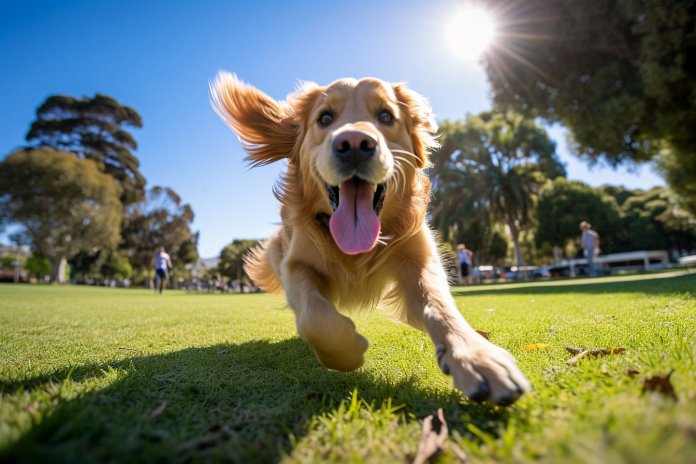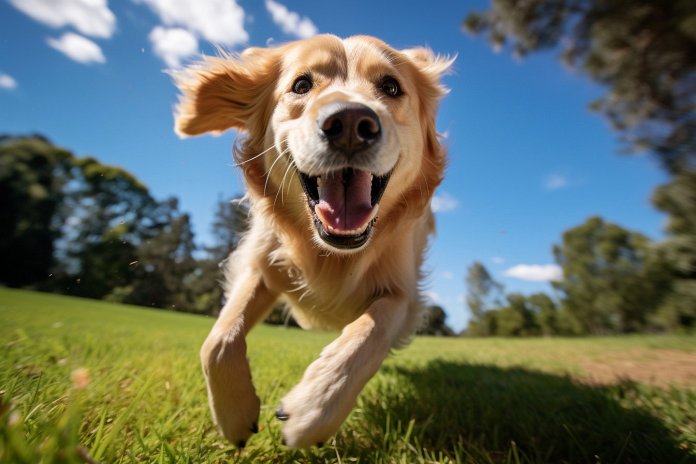
Our media screens are filled with entertaining videos of dogs performing impressive feats! From salsa dancing to jumping competitions, and even climbing trees, dogs never fail to astonish us. However, there is one peculiar behavior that is worth exploring further – walking backward. While it may seem amusing at first, this behavior is often a sign of an underlying problem. Dogs may walk backward due to fear or even a medical condition, making it important to understand the possible causes if you notice this behavior in your own dog.
Signs Why Your Dog is Walking Backward
There can be various reasons why a dog starts walking backward. To determine the cause, it’s essential to observe your dog’s typical behavior and habits. Some dogs may walk backward out of fear, particularly when faced with certain features in their environment such as doorways or slippery floors. On the other hand, backward walking may be a sign of a developing neurological condition. By paying attention to the situations in which your dog exhibits this behavior, you can gain insight into why it is happening.
When a dog is afraid, their body language will reflect their anxiety. They may appear tense, shaking, and cowering. Their tail may be tucked, and they may whimper or cry when confronted with their fear. In addition, fearful dogs often display intimidated body postures, such as ears down and tail tucked. If your dog hides and peeks at you when facing their fear, these behaviors are relevant to the backward walking.
Differentiating between fear-based and neurological backward walking can be challenging since the signs can be similar. Both fearful and neurologically affected dogs may exhibit shaking, crying, or head-shaking. Dogs may walk backward when afraid, experiencing hind quarter problems, or experiencing neurological disorientation. Walking backward may provide relief from pain, which could indicate an underlying medical issue. If your dog starts acting strangely, such as losing their appetite, appearing disoriented and weak, these are serious signs that warrant a visit to the veterinarian.
Body Language
When combined with backward walking, some symptoms should not be ignored, including shaking, cowering, dropped ears, whimpering, and tail tucking. Additionally, if there is a more significant problem, other signs to watch for include appearing disoriented, engaging in repetitive behaviors, experiencing coordination issues and paw dragging, carrying their head low, and easily getting fatigued.
History of Dogs Walking
Have you ever paid attention to how your dog walks forward? Walking is an essential part of your dog’s routine, and understanding their gait is crucial. Surprisingly, the accurate depiction of how four-legged animals walk was only established about 120 years ago. Eadweard Muybridge’s works in the 1880s were the first to accurately illustrate the walking patterns of four-legged animals. Recently, a study revealed that taxidermists, anatomists, and toy manufacturers are wrong about how dogs walk almost half the time. Despite their various movements, all four-legged animals, from horses to cats to dogs, follow a similar pattern of stepping with their hind legs first, followed by their forelegs. This pattern provides the most stability while walking.
The Science Behind the Way Dogs Walk
Understanding how dogs move and their physiology can help detect when something is wrong. Dogs possess unique features that allow them to move differently from other animals. These features include a flexible spine, long loin, and strong abdominal muscles, enabling dogs to stretch like Greyhounds when running. Additionally, two lower bones in their front legs are separate, providing dogs with agility for turning. Dogs also have feet that can grip the ground, enhancing their agility and ability to feel the ground beneath them.
Dogs have four basic gaits: walking, trotting, rotary cantering, and rotary galloping. Walking is the slowest gait, where three feet are always on the ground. Wolves, for example, can travel long distances because they predominantly use a trot. In a trot, the diagonal feet move together. The canter, used in agility, is a gait that only occurs in dogs about ten percent of the time, if at all. The gallop, resembling the running of a Greyhound, involves the front lead foot stretching forward, followed by the hind legs.
Training Your Dog to Walk Backward
Training your dog to walk backward can be an enjoyable experience. Whether you want to teach your dog this skill for practical reasons or just for fun, it’s important to start with simple steps. You’ll need food, a leash, a clicker, and a calm environment. Using a narrow space like a hallway can help focus your dog on the backward movement.
To begin training, ensure your dog understands the “Stay” command. Face your dog and take a few steps away before walking forward toward them. Your dog should naturally step backward in response. When this happens, reward them with a treat or praise. Repeat the process, adding a command word like “Back” or “Rear.” Remember to practice consistently for the best results!
“Understanding the Reasons Behind Your Dog’s Backward Walking”

Tips & Things to Know
1️⃣ If you notice your dog walking backwards, it could be a sign of a problem. It may indicate fear or a medical issue, so it’s important to observe your dog’s behavior and consult with a veterinarian if necessary.
2️⃣ Pay attention to your dog’s body language when they are walking backwards. Signs of fear include trembling, cowering, tail tucking, and whimpering. If you notice these signs, it’s likely that the backwards walking is a fear response.
3️⃣ If your dog’s backwards walking is accompanied by other symptoms such as disorientation, repetitive behaviors, incoordination, or fatigue, it could indicate a more serious problem. In such cases, it’s crucial to have your dog examined by a veterinarian to determine the underlying cause.
Frequently Asked Questions, Answered ✅
1. What are some possible reasons for a dog walking backward?
– The dog may be afraid and walking backward as a coping mechanism.
– There could be a medical problem requiring a veterinarian consultation.
2. How can you tell if a dog’s backward walking is due to fear or a neurological problem?
– The signs of anxiety and fear in the dog’s body include tension, shaking, cowering, whimpering, and tail tucking.
– Dogs may also walk backward due to neurological disorientation or hind quarter problems, which can be difficult to differentiate from fear-related behavior.
3. What are some symptoms to look out for when paired with backward walking?
– Shaking, cowering, ears dropping, whimpering, and tail tucking are signs that could indicate a fear response.
– Other signs include appearing disoriented, repetitive behaviors, incoordination and paw dragging, low head carriage, and easily becoming fatigued.
4. How do four-legged animals, including dogs, walk?
– Four-legged animals, including dogs, step with their left hind leg, followed by their left foreleg. Then they step with their right hind leg, followed by the right foreleg. The body is always supported by three legs in a triangle base for stability.
5. What are the different gaits of dogs and how do they move?
– Dogs have four basic gaits: walk, trot, rotary canter, and rotary gallop.
– Walking is the slowest gait, with three feet on the ground.
– Trotting occurs when the diagonal feet move together.
– The canter is a gait used in agility and provides more agility and propulsion from the rear.
– The gallop involves the front lead foot stretching forward with the flexible spine, followed by the hind legs coming forward to meet the front legs.